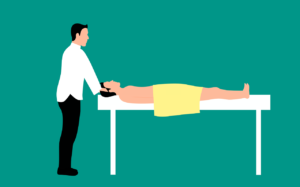
If you have scoliosis and struggle to find a comfortable sleeping position, you’re not alone. Finding the best position to sleep in can make a significant difference in your overall comfort and quality of sleep. In this article, we’ll explore the topic of the best sleeping position for scoliosis, offering valuable insights and recommendations that can help you wake up feeling more rested and rejuvenated. Say goodbye to restless nights and say hello to a better night’s sleep!
The Best Sleeping Position for Scoliosis

Understanding Scoliosis
Scoliosis is a medical condition characterized by an abnormal curvature of the spine. This condition can affect people of all ages, although it is most commonly diagnosed during adolescence. While scoliosis can vary in severity, it can often lead to discomfort and pain, particularly when it comes to finding a comfortable sleeping position. Understanding scoliosis and its impact on sleep is crucial in finding the best sleeping position for individuals with this condition.
Importance of Proper Sleeping Position for Scoliosis
Finding the proper sleeping position is essential for anyone, but it becomes even more crucial for individuals living with scoliosis. Sleeping in the wrong position can worsen the discomfort and pain associated with scoliosis, while sleeping in the right position can help alleviate these symptoms. Proper alignment and support of the spine during sleep can make a significant difference in managing scoliosis-related discomfort.
Side Sleeping Positions
Side sleeping positions are generally considered the most suitable for individuals with scoliosis. Here are three options to consider:
1. Sleeping on your Non-Curved Side
If you have scoliosis, it is best to sleep on your non-curved side. This means that if your spine curves to the right, you should sleep on your left side and vice versa. By sleeping on the non-curved side, you can help maintain a more neutral alignment of your spine during sleep.

2. Sleeping on your Curved Side
For some individuals with scoliosis, sleeping on the curved side may provide relief. By doing so, you can potentially reduce the pressure on the curved portion of your spine. It is important to note that this position may not be suitable for everyone, so it is crucial to listen to your body and consult with a healthcare professional if you experience any discomfort.
3. Sleeping in the Fetal Position
Sleeping in the fetal position can also be beneficial for individuals with scoliosis. By curling up on your side with your knees drawn towards your chest, you can help promote a more natural alignment of your spine. This position can also ease tension and pressure on the spine, providing potential relief from scoliosis-related discomfort.
Back Sleeping Positions
While side sleeping positions are generally recommended for individuals with scoliosis, some back sleeping positions can also be helpful. Here are a few options to consider:
4. Sleeping with a Pillow Under Your Knees
Placing a pillow under your knees while sleeping on your back can help relieve pressure on your lower back and promote a more neutral spinal alignment. By elevating your knees slightly, you can help reduce strain and discomfort caused by scoliosis.

5. Sleeping with a Pillow under Your Lower Back
If you prefer sleeping on your back, placing a pillow under your lower back can provide additional support and alignment to the spine. This can help alleviate some of the pressure and pain associated with scoliosis while promoting a more comfortable sleep.
6. Sleeping with a Body Pillow
Sleeping with a body pillow can offer excellent support and alignment for individuals with scoliosis. By hugging the pillow and placing it along the length of your body, you can help maintain proper spinal alignment and alleviate discomfort. This position can also help prevent you from rolling onto your stomach during sleep, which is generally not recommended for individuals with scoliosis.
7. Sleeping on a Firm Mattress
Choosing the right mattress is crucial for individuals living with scoliosis. Opting for a firm mattress can help provide adequate support and reduce the risk of spinal misalignment during sleep. A firm mattress can help to maintain the natural curvature of the spine, thereby minimizing discomfort and pain.
8. Avoiding Sleeping on Your Stomach
Sleeping on your stomach is generally not recommended for individuals with scoliosis. This position can strain the spine and lead to an unnatural curve in the back. It can also place excessive pressure on the neck and shoulders, exacerbating any discomfort associated with scoliosis. It is advisable to avoid this sleeping position and opt for one that promotes better spinal alignment.
Tips for Finding the Best Sleeping Position for Scoliosis
While the above positions can be beneficial for individuals with scoliosis, it is important to note that finding the best sleeping position may require some trial and error. Here are a few tips to consider:
9. Experiment and Listen to Your Body
Every individual is unique, and what works for one person may not work for another. Experiment with different sleeping positions and listen to your body. Pay attention to any discomfort or pain and adjust accordingly. Finding the best position for you may involve some trial and error, but it is worth the effort to achieve a more comfortable and restful sleep.
10. Consult with a Healthcare Professional
If you are struggling to find the best sleeping position for scoliosis or experiencing persistent discomfort, it is advisable to consult with a healthcare professional. They can provide personalized recommendations based on your specific condition and help guide you towards finding the most suitable sleeping position.
Conclusion
Finding the best sleeping position for scoliosis can make a significant difference in managing discomfort and pain associated with this condition. Side sleeping positions, such as sleeping on the non-curved side or in the fetal position, are generally recommended. Back sleeping positions, including using pillows for support or sleeping with a body pillow, can also provide relief. It is important to avoid sleeping on your stomach and opt for a firm mattress to maintain proper spinal alignment. Remember to experiment, listen to your body, and consult with a healthcare professional if needed. With the right sleeping position, you can enhance your sleep quality and experience greater comfort despite scoliosis.







